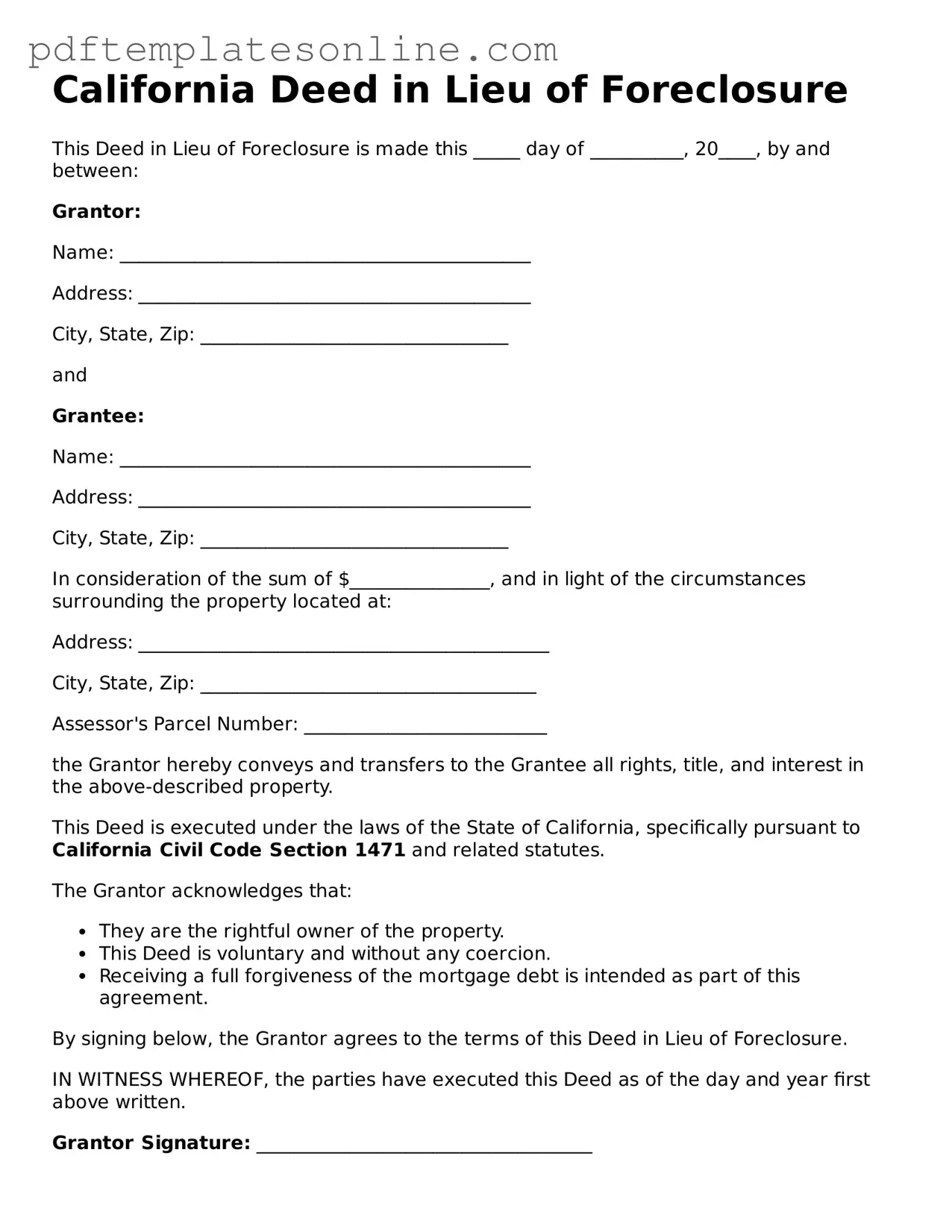Filling out the California Deed in Lieu of Foreclosure form can be a complex process, and mistakes can lead to significant delays or even rejection of the deed. One common mistake is not fully understanding the implications of signing the deed. This document transfers ownership of the property back to the lender, which means the homeowner gives up all rights to the property. Many people overlook this critical aspect.
Another frequent error is failing to provide accurate information. This includes incorrect property descriptions or missing signatures. Every detail matters. If the information does not match what the lender has on file, it can create complications. Ensuring all data is correct is essential for a smooth process.
Many individuals also neglect to read the entire form carefully. Skimming through the document can lead to misunderstandings about the terms and conditions. Some may not realize that they are responsible for any outstanding debts associated with the property. Taking the time to review the entire form can help avoid unexpected obligations.
Additionally, people often forget to consult with a legal professional or real estate expert. While the form may seem straightforward, the implications of signing a Deed in Lieu of Foreclosure can be significant. A qualified expert can provide valuable insights and help navigate potential pitfalls.
Another mistake is assuming that the process is automatic once the form is submitted. After filing the deed, homeowners must follow up with the lender to ensure the transfer is processed. Some may mistakenly believe that the lender will handle everything without further communication.
Some individuals fail to consider tax implications. Forgiven debt can sometimes be taxable income. Homeowners should consult a tax professional to understand how a deed in lieu of foreclosure might affect their tax situation.
Lastly, many people do not keep copies of the submitted documents. It is crucial to retain copies of everything for personal records. In case of disputes or questions, having documentation can be invaluable.
